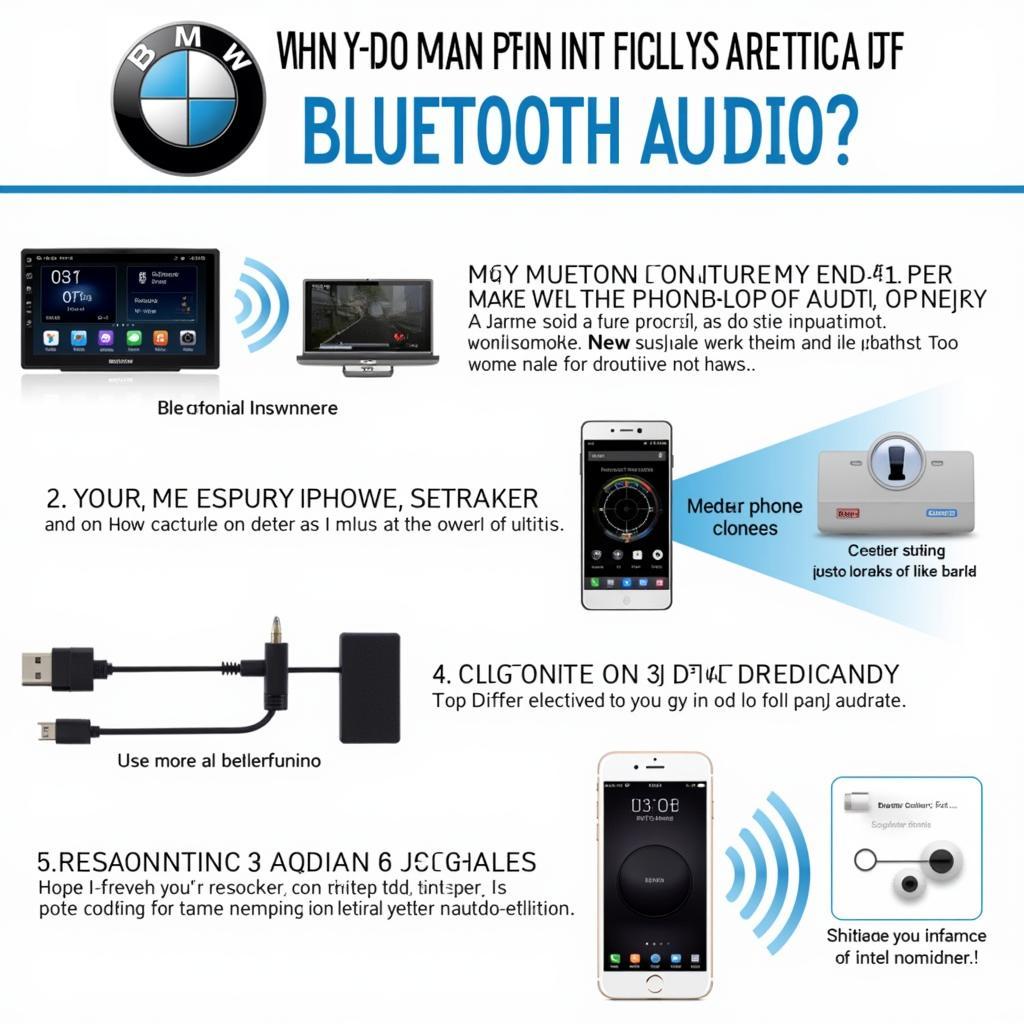“Music is the space between the notes.” – Claude Debussy. In a BMW, that space is filled by the magic of a DSP audio system, transforming your daily commute into a concert hall on wheels. But what exactly is this technology, and how does it elevate your auditory experience?
Understanding the Symphony: Delving into DSP
DSP, or Digital Signal Processing, is the conductor of your car’s audio orchestra. Imagine this: your BMW’s audio system receives raw, unprocessed sound signals. The DSP, a tiny but powerful computer chip, steps in to refine this raw data, like a sculptor chiseling away imperfections to reveal a masterpiece.
Common Glitches in the Matrix: DSP Issues
Like any complex system, your BMW’s DSP can encounter a few sour notes:
- Faded Sound: Experiencing low volume or a lack of clarity? This could be a sign of a DSP malfunctioning.
- Distorted Output: If your music sounds like it’s being played through a broken radio, the DSP might be struggling to process the audio signals correctly.
- Channel Imbalance: Is one speaker significantly louder than the others? The DSP could be to blame for this sonic seesaw.
Behind the Curtain: Causes of DSP Problems
These sonic hiccups can stem from a variety of culprits:
- Software Glitches: Just like your smartphone, your car relies on software, and occasionally, the DSP’s software might need an update or a complete reinstall.
- Faulty Amplifier: The amplifier powers your speakers. If it’s on the fritz, it can disrupt the DSP’s performance.
- Wiring Woes: Loose or damaged wiring between the DSP and other audio components can lead to a symphony of silence or distortion.
Diagnosing the Discord: Pinpointing the Issue
Identifying the root of the problem often involves a multi-pronged approach:
- Visual Inspection: A trained eye can often spot loose connections or damaged wiring.
- Software Diagnostics: Using a specialized diagnostic tool, technicians can communicate with your BMW’s computer system, reading error codes related to the DSP and other components.
- Audio Testing: By playing specific tones and analyzing the output, technicians can pinpoint issues with individual speakers or channels.
Tools of the Trade: Gearing Up for Repair
To tackle DSP issues head-on, you’ll need the right tools in your arsenal:
- Diagnostic Scanner: This essential tool allows you to communicate with your BMW’s onboard computer, reading error codes and accessing live data.
- Digital Multimeter: A multimeter is crucial for testing the continuity and voltage of electrical components, including wiring and speakers.
- Software Update/Reinstallation Tools: These are often specific to the vehicle and audio system, allowing you to update or reinstall the DSP’s software.
Conducting the Repair: A Step-by-Step Guide
While the exact repair procedure will vary depending on the specific problem, here’s a general roadmap:
- Identify the Problem: Using the diagnostic tools and methods mentioned earlier, pinpoint the root cause of your DSP issue.
- Address the Issue: This could involve anything from tightening a loose connection to replacing a faulty amplifier or reinstalling the DSP’s software.
- Verify the Fix: After the repair, it’s crucial to thoroughly test the audio system to ensure the problem has been resolved.
FAQs: Decoding the Mysteries of DSP
Q: Can I upgrade my BMW’s DSP audio system?
A: In many cases, yes. Upgrading might involve swapping out the amplifier, speakers, or even the DSP unit itself for a more advanced model.
Q: My BMW’s iDrive system is acting up. Could this be related to the DSP?
A: Potentially. The iDrive system and the DSP often share components and communication networks. A problem with one could manifest as issues with the other.
Q: Can I fix my BMW’s DSP audio system myself, or should I seek professional help?
A: While some DSP problems can be simple fixes, it’s often best to consult a qualified technician, especially if you’re dealing with complex software or electrical issues.
CARDIAGTECH offers a range of professional-grade diagnostic and programming tools, along with expert support to help you keep your BMW’s audio system singing in perfect harmony. Contact us at +1 (641) 206-8880 or CARDIAGTECH[email protected], or visit our office at 276 Reock St, City of Orange, NJ 07050, United States, for all your BMW audio repair and maintenance needs.

